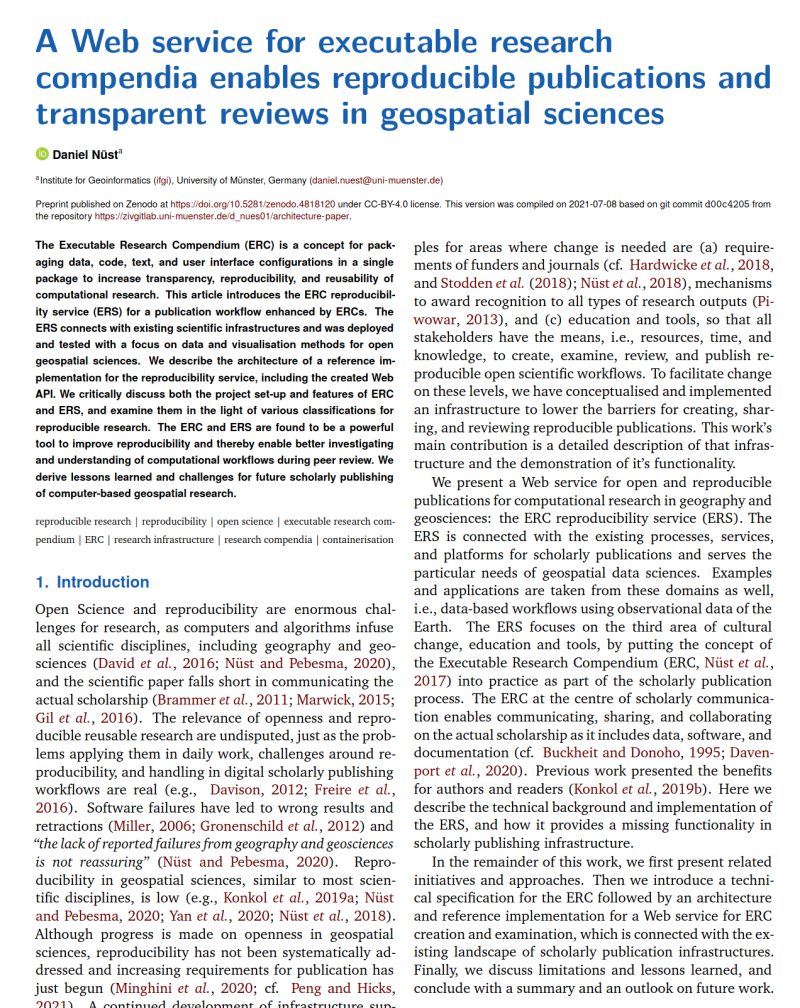New preprint on o2r architecture and implementation
08 Jul 2021 | By Daniel NüstA new preprint is out! 📢
With the first commit on the manuscript repository made on August 1st 2018, almost three years ago, this one is long overdue. In the article, o2r team member Daniel summarises over 5 years of designing and implementing the the o2r software infrastructure for Executable Research Compendia (ERCs). The article “A Web service for executable research compendia enables reproducible publications and transparent reviews in geospatial science” is now published on Zenodo:
Nüst, Daniel. (2021, July 8). A Web service for executable research compendia enables reproducible publications and transparent reviews in geospatial sciences (Version 1). Zenodo. https://doi.org/10.5281/zenodo.4818120
The preprint covers the ERC specification, o2r API specification, the o2r system architecture, and the o2r reference implementation - the ERC Reproducibility Service. It contains an extensive discussion and provides lessons learned from implementing ambitious ideas for increasing reproducibility. This article’s most important section though is Acknowledgements: all o2r team members, past and present, contributed to making the vision of ERCs for scholarly communication a reality. Thanks everyone!
The screenshot below shows the preprints first page.

Abstract
The Executable Research Compendium (ERC) is a concept for packaging data, code, text, and user interface configurations in a single package to increase transparency, reproducibility, and reusability of computational research. This article introduces the ERC reproducibility service (ERS) for a publication workflow enhanced by ERCs. The ERS connects with existing scientific infrastructures and was deployed and tested with a focus on data and visualisation methods for open geospatial sciences. We describe the architecture of a reference implementation for the reproducibility service, including the created Web API. We critically discuss both the project set-up and features of ERC and ERS, and examine them in the light of various classifications for reproducible research. The ERC and ERS are found to be a powerful tool to improve reproducibility and thereby enable better investigating and understanding of computational workflows during peer review. We derive lessons learned and challenges for future scholarly publishing of computer-based geospatial research.
Discuss and share
New preprint is out 📢: "A Web service for executable research compendia enables reproducible publications and transparent reviews in geospatial science"
— Daniel Nüst (@nordholmen) July 8, 2021
👉https://t.co/VAnRetcztL
A sweeping blog about all specifications and implementations of 5+ years by team of @o2r_project. pic.twitter.com/OGm7vlzVXn

